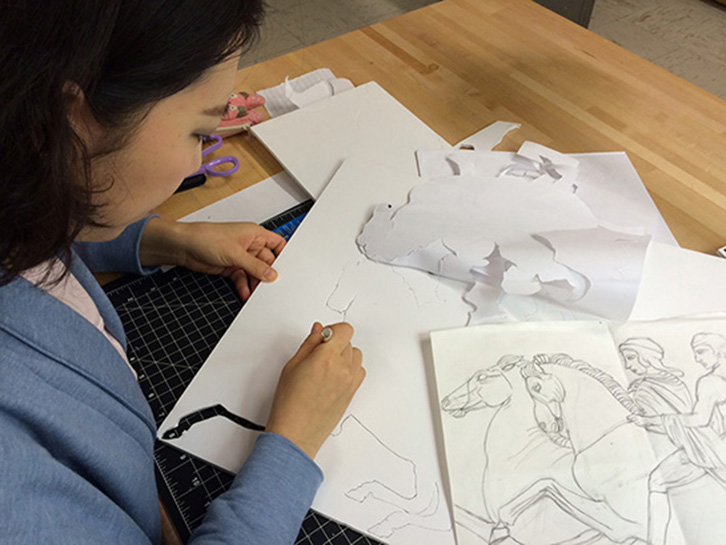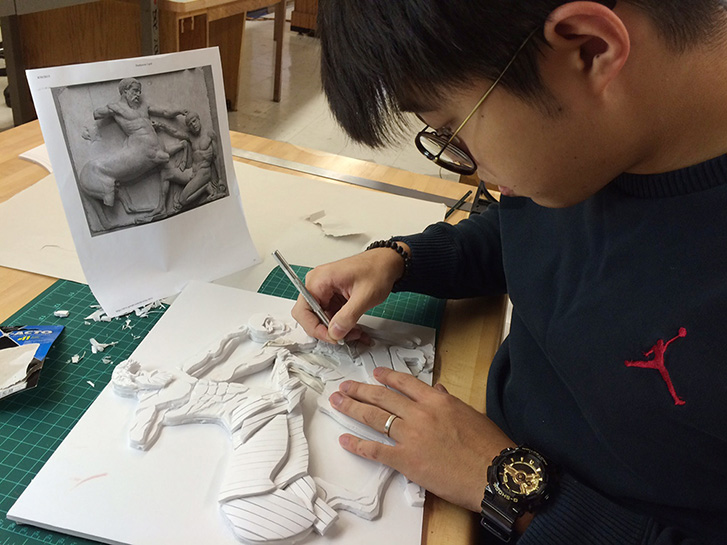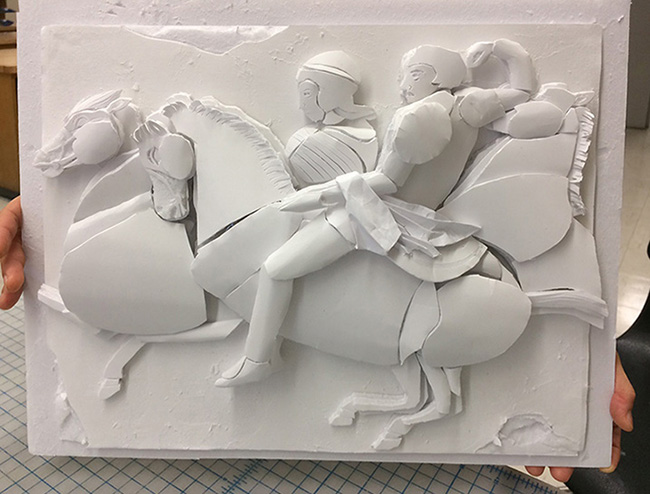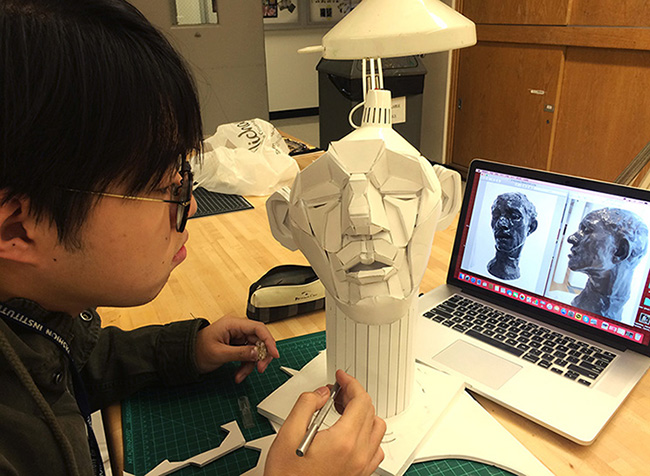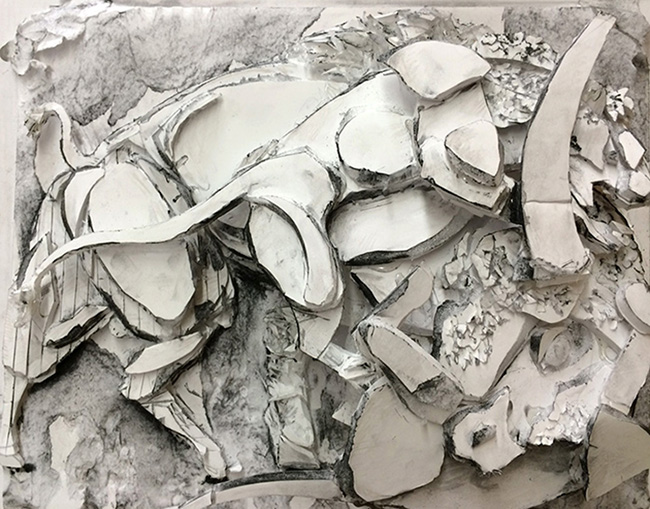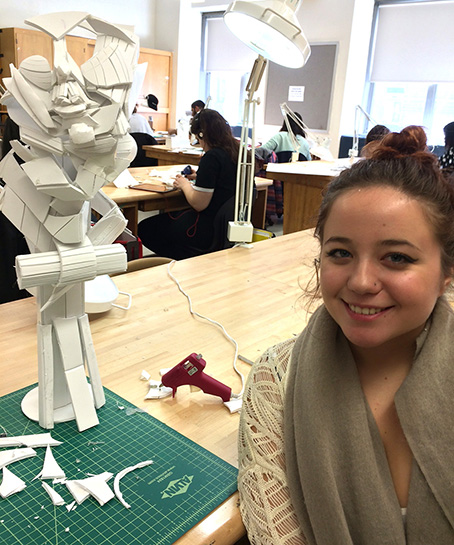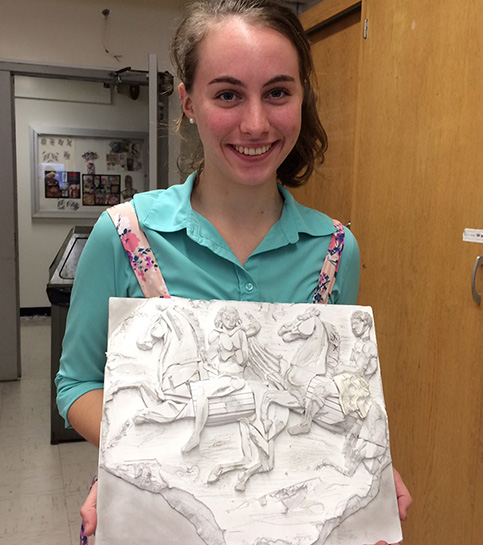2D to 3D — It’s more than adding a dimension
At one time they were sculpted with chisel on marble. In Prof. Sue Willis’ 3D Design Fine Arts class, the recreation of ancient Greek reliefs are made with foam core, masking tape, glue guns and X-Acto knives.
“The challenge is to recreate the reliefs in foam core,” says Prof. Willis. “Natural variations occur as students strive to build organic form from flat geometric shapes.”
The assignment is meant to familiarize students with the fundamentals of 3D design: planar relationships, composition, light, shadow, line and texture.
Students work from 2D prints of ancient reliefs. “They cut and score foam-core, and practice techniques for creating volume and shape…and for discerning the volumes and axes of planes in relation to the whole,” explains Prof. Willis.
In the process the relief takes the 2D image part of the way into a 3D reality and then fleshes it out with complete sculpture in the round. In doing so, the students interpret the original 2D print, adding volume, physical texture, and real shadow to create a sculpture.
Yuyong Park’s piece (above), says Prof. Willis “honors her aesthetic choice to simplify surface texture and intensify light.”
Timothy’s sensitive, elaborate, planar construction (above) plays off light against shadow.
Tiffany’s dynamic composition also functions abstractly, says Prof. Willis. It is a great example of how students can move toward abstraction, even when starting with literal Greek sculpture.
Kassandra Papa’s project (below) “rhythmically pierces space.”
Patricia Downs (below) shows “astute attention to detail, planar axes and texture,” says Willis.
Patricia added graphite to emphasize tonal variation, and thus the three dimentionality of the work.
